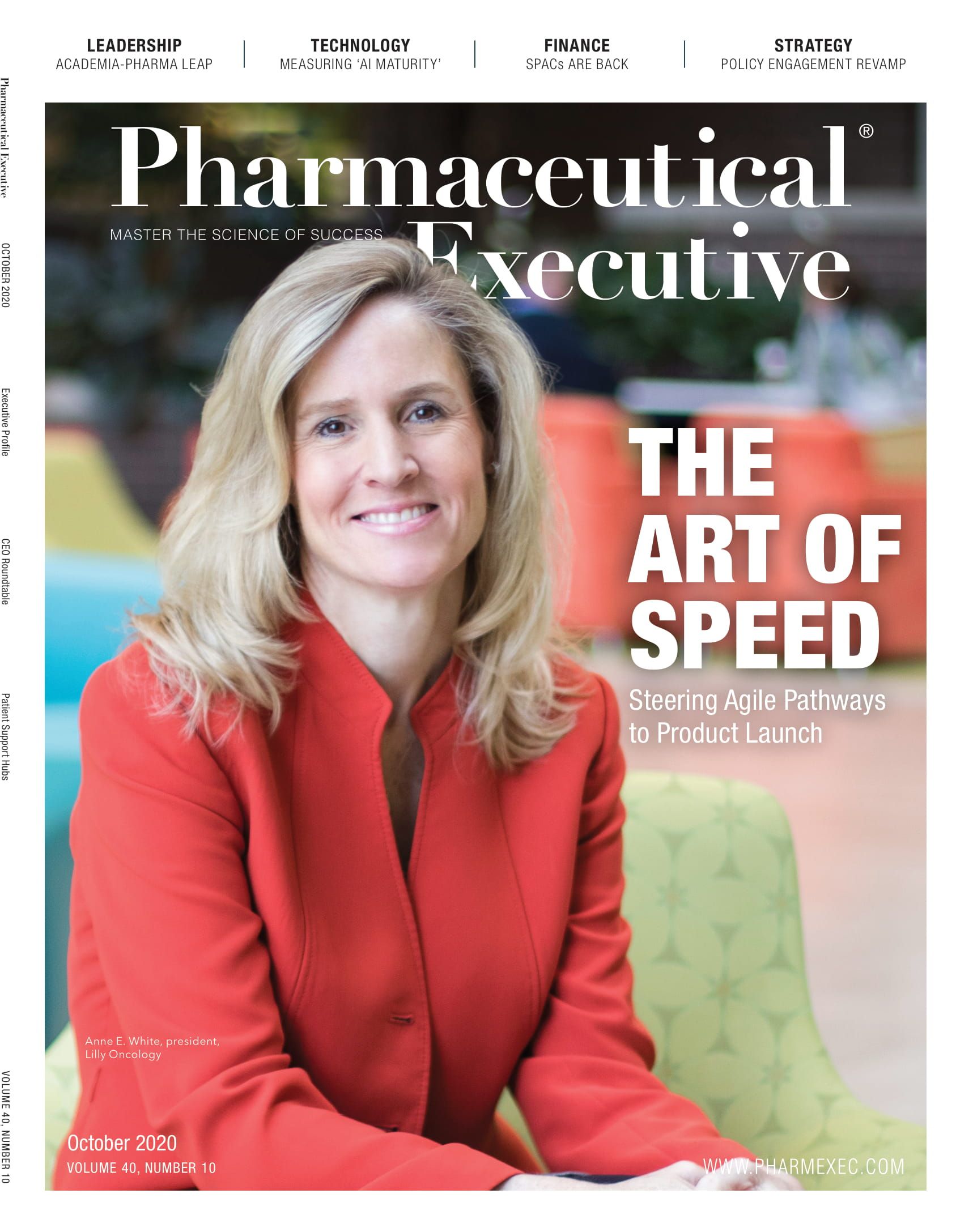Critical Connection: Patient Services and Product Launch
A look at best-practice approaches to aligning the strategy and design of hub service models with preparations for market entry of a new therapy.
Setting up patient services programs is a critical endeavor that can help make or break a product launch and the ongoing success of a product during “normal” times. In the wake of the novel coronavirus pandemic and increasingly uncertain coverage scenarios, the role of hub services is even more critical for pharmaceutical and biotechology companies to ensure patient access to therapy and to help patients navigate the healthcare system.
When well-designed, these programs tailor services to make it easier for patients to learn about and receive appropriate care, with services that may include disease state education, support for understanding insurance coverage, and financial assistance for those in need. Understanding that no one-size-fits-all template for patient services programs exists, this article provides best-practice guidance on choosing your support service model, as well as design and implementation strategies.
Choosing your HUB model
Dana Edwards

As you prepare to launch your product, one of the most important steps is to determine which hub model to implement. Should your team rely wholly on a third party, a hybrid of outsourced and insourced components, or all in-house resources?
To begin, based on your product strategy, potential patient pool, and planned services to be built into your program, assess the infrastructure needs of hosting and managing a patient services support program, spanning:
- Technology and data management, such as the systems and technology to support secure handling of patient information, the complexity of business rules, and workflows associated with patient services administration.
- Legal and regulatory compliance, such as organizational structure and bandwidth to support oversight of patient services in-house, regular monitoring, and remediation processes.
- Human capital and staffing, considering that patient services generally rely on people resources and an investment in ongoing recruiting, hiring, and support for hub staff, as well as leadership and management for oversight.
- Training and quality management, e.g., the structure and ongoing support needed to implement and maintain hub programs.
- Facilities, including the infrastructure for the necessary equipment (computers, phones, etc.) and space to support a hub program, as well as secure areas to keep patient information safe.
- Patient service management, considering the expertise needed to support the design, development, and ongoing operations of patient service programs.
- Product service, such as the necessary processes and controls to meet a product’s specific requirements, e.g., Risk Evaluation and Mitigation Strategy (REMS).
Then, weigh those needs against your current organizational structure, as well as the intended focus of your enterprise and the product being launched to identify the hub model that best fits your organization.
Let’s say your enterprise is focused on science and delivery of novel life-changing therapies and the product you are preparing to launch is an oral oncolytic. An outsourced model might be ideal in this situation because it will provide the people, process, and technology to support your launch, while your team focuses on research and development. In this case, you will need to find the right vendor based on the combination of capabilities needed (such as bridge program and financial assistance) and the account management approach (such as dedicated staff and partnership strategy). While the vendor’s capabilities should align with the product need and the intended services to be provided to customers, the account management approach needs to align with what your team expects for day-to-day operations, strategic oversight, compliance requirements, and the vendor/client communication plan.
For example, a fully outsourced model for a physician-administered ophthalmology product that included reimbursement support and financial assistance enlisted a “right-sized” vendor to implement and run the day-to-day patient services program. As part of the strategic oversight plan, the manufacturer actively monitored and audited the program’s success through vendor-facilitated daily activity reports, weekly meetings to track progress against goals, and quarterly business review meetings of the overall program progress against milestones. This approach enabled the manufacturer to be confident the program was meeting its organizational goals and product strategy without the need to execute the hub services themselves. It also enabled them to adjust the services support as necessary.
Casey Horton

For comparison, a hybrid model includes some services to be administered in-house, while others are outsourced. This model should be developed based on in-house infrastructure and skill set, as well as the desired customer experience. For example, in a recent case, the manufacturer preferred to keep the customer relationship management in-house, so it decided to focus on front-end customer support and outsource payer-related services like benefits verification and prior authorization. In a hybrid model, the integration of people, process, and technology is important. You want to be sure your in-house and outsourced functions own and are accountable for their respective areas, have proper handoffs between the two functions, and are working consistently and collaboratively to create a positive patient experience.
Some manufacturers prefer to manage the patient services support entirely in-house. The advantage of this approach is it enables you to tightly control every aspect of the product experience. The disadvantage is it requires having the necessary infrastructure, as well as the ability to develop and maintain the people, processes, and technologies required to fully support the program. This may work well when the target patient population is particularly small, or when the product is nuanced and has complexities in the manufacturing or distribution process. In addition, some large manufacturers elect to keep everything in-house, especially in cases where past outsourced experiences delivered underwhelming or even negative patient experiences.
Designing your program
Once your team determines the model that best aligns with your organizational goals, product strategy, and infrastructure, you can begin designing the patient services program. Here, it will be important to map the patient and provider journeys to determine and address any potential barriers to access. The design strategy should at once 1) help the right patients learn about the therapy option, its potential benefits to them, and the hub program offering and requirements; as well as 2) be convenient for clinicians to refer into, work within, and rely on to facilitate patient access and clinical outcomes. Depending on the therapy, key service offerings might include:
- Reimbursement support to help patients navigate insurance coverage.
- Fast-start or bridge programs to help patients initiate therapy quickly while working through access challenges.
- Patient financial assistance in the form of free product for uninsured patients, financial assistance, or copay assistance for underinsured patients, or referrals to charitable organizations for government-funded insured patients.
- Nurse educator support to provide individualized education and product support to patients and their caregivers.
- Adherence support to help patients initiate and stay on their therapy.
- REMS support to meet FDA-directed requirements to prevent, monitor, and/or manage a specific serious risk by informing, educating, and/or reinforcing actions to reduce the frequency and/or severity of such an event.
For example, in one recent case, a manufacturer of an oncology product with a REMS created a full suite of reimbursement, patient financial, and adherence support services to be able to address manufacturing specificity, multiple patient touchpoints, care coordination, provider requirements for receiving and administering the product, and ensuring coverage and access according to payer policies. For comparison, a product in the rare disease space implemented only reimbursement support and patient financial assistance for its hub program, because the therapy is administered in a controlled hospital setting in which adherence poses little risk.
Once the service components of your program are determined, begin developing the program. As a first step, thoroughly document program design parameters and key decisions, including program objectives, compliance considerations, program communication tactics, and service offerings.
Managing and motivating performance
Once the components and support tactics are planned, be sure to define metrics to track and assess program performance, and create a process to monitor and report metrics against key performance indicators (KPIs). Also, define actionable analytics for the report to be sure the right information is included, and create a process and plan to implement necessary changes based on results and learnings. It is also important to plan ongoing compliance reviews for marketing materials and correspondence templates.
A systematic approach for program management will ensure that issues are identified, mediated, and course corrected early in order to support long-term success. Your measurement tools should be used to monitor the progress and performance of the program, as well as to identify opportunities for improvement. With this in mind, build the program around the concept of continuous process improvement and plan for evolution.
To do this, plan to perform audits and regular monitoring to ensure operations adhere to standards and perform in line with expectations, and that KPIs align with SOPs. Consider incorporating independent audits to help reveal discrepancies or catch when the program evolves or strays.
Dana Edwards, Director, Lead for Patient Services, Life Sciences, Casey Horton Director, Global Life Sciences Governance, Risk Management and Compliance; both with Guidehouse

Addressing Disparities in Psoriasis Trials: Takeda's Strategies for Inclusivity in Clinical Research
April 14th 2025LaShell Robinson, Head of Global Feasibility and Trial Equity at Takeda, speaks about the company's strategies to engage patients in underrepresented populations in its phase III psoriasis trials.
Trump: 'Major Tariff' on Pharmaceuticals Coming Soon
Published: April 9th 2025 | Updated: April 9th 2025“We’re going to tariff our pharmaceuticals, and once we do that, they are going to come rushing back into our country," President Donald J. Trump said during a Tuesday night dinner in Washington.